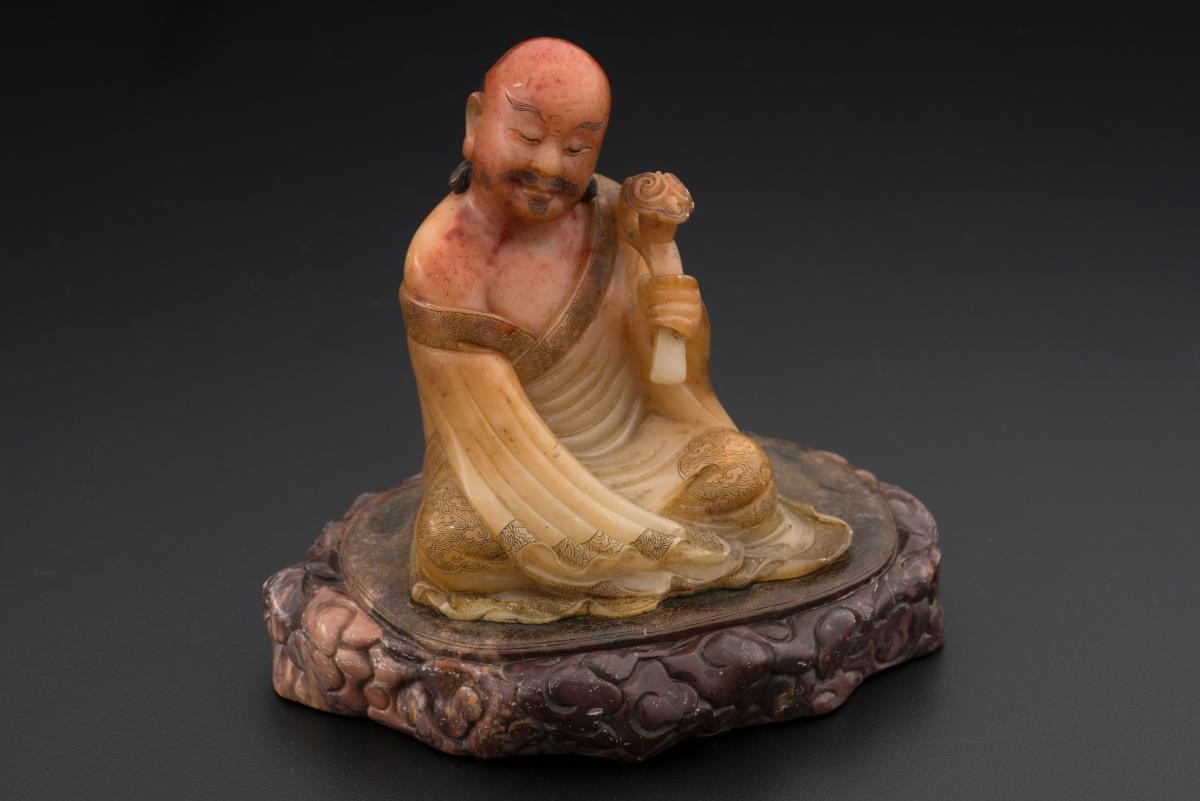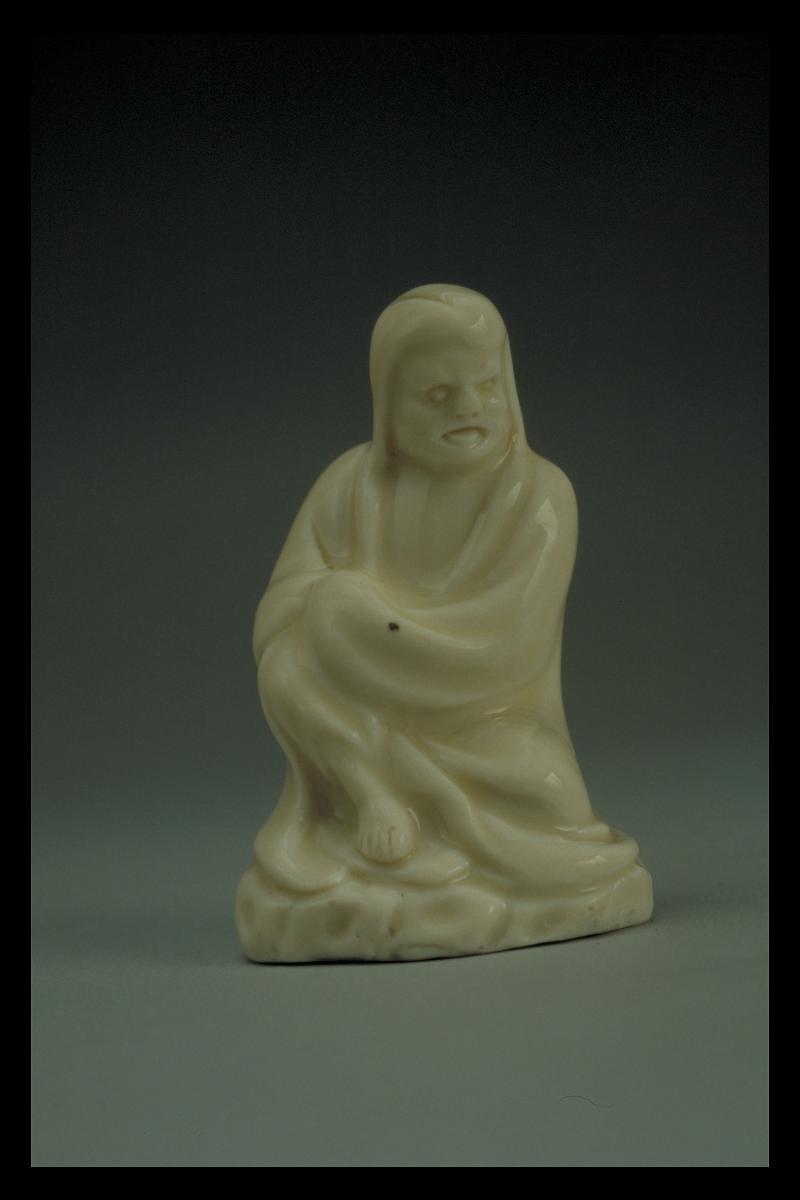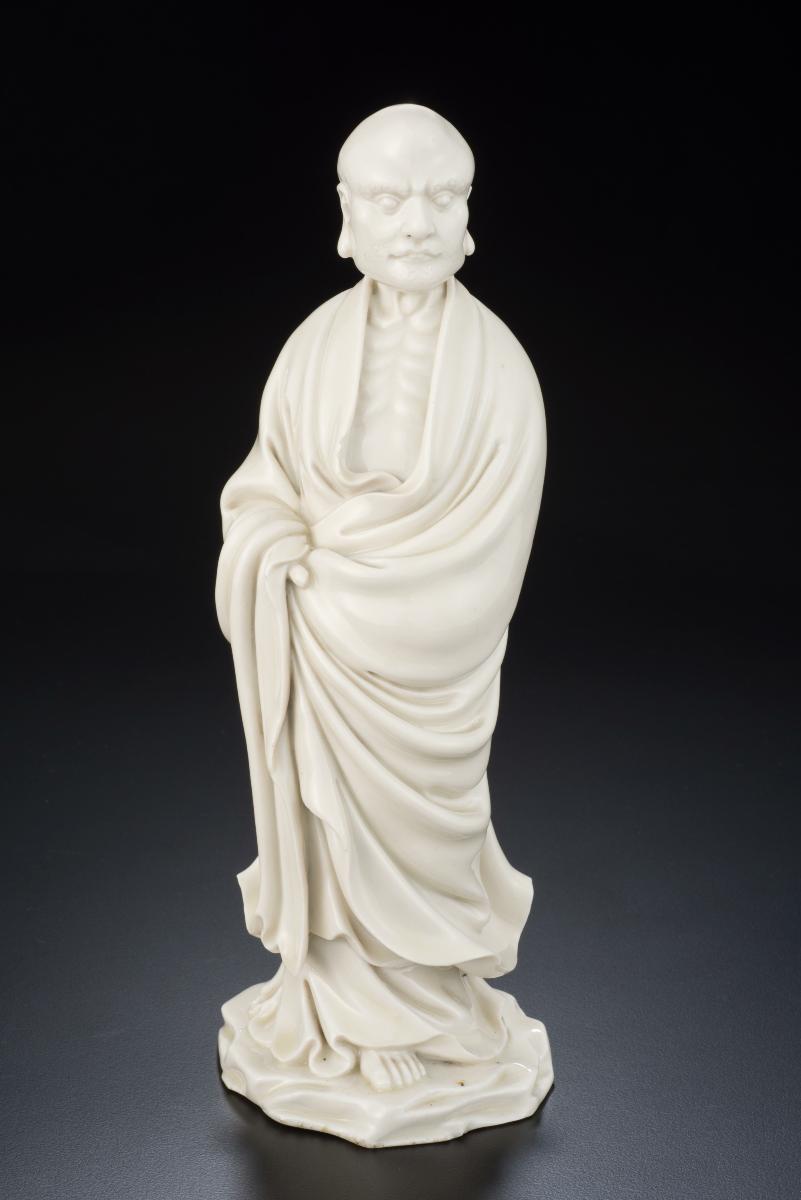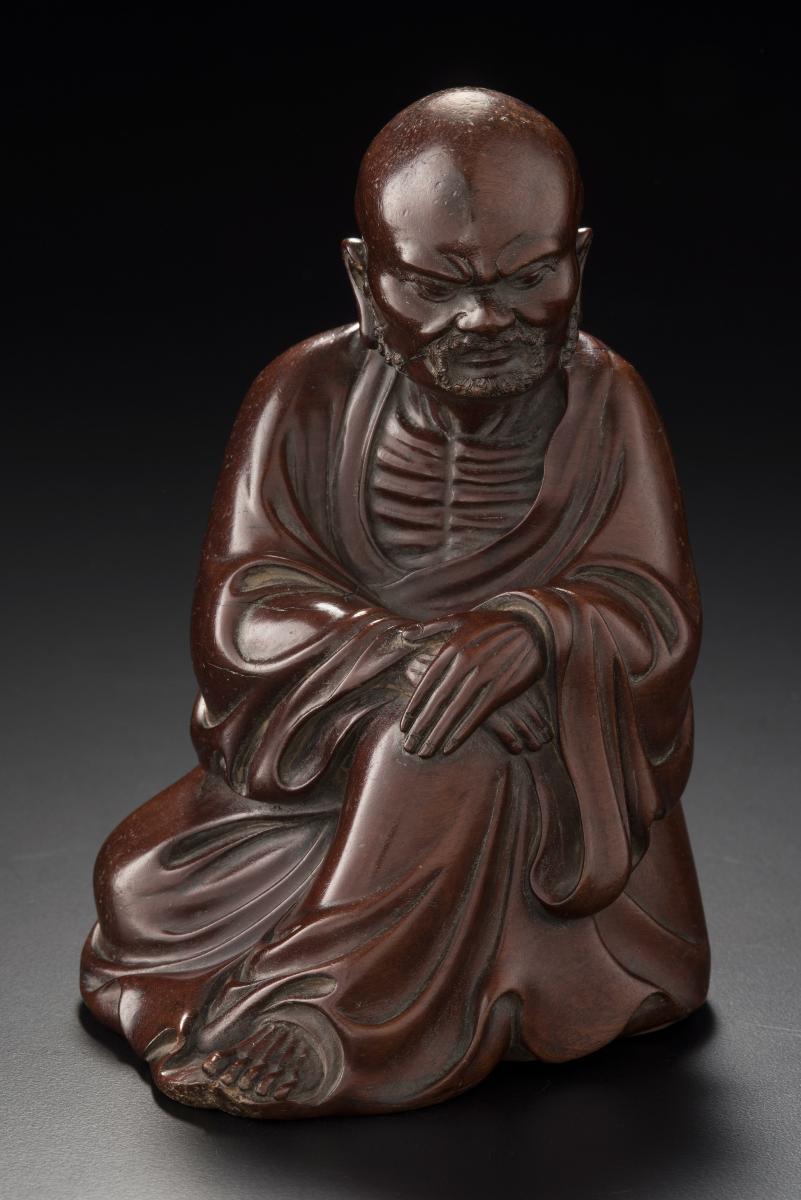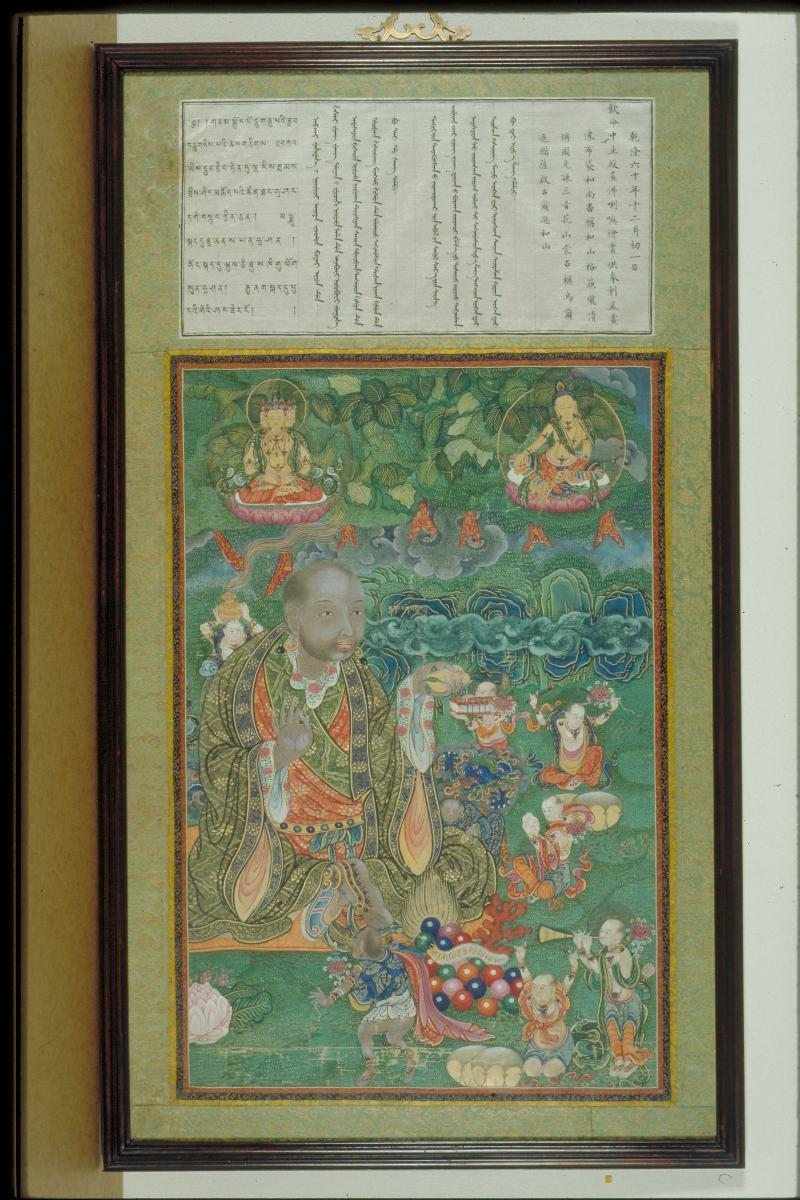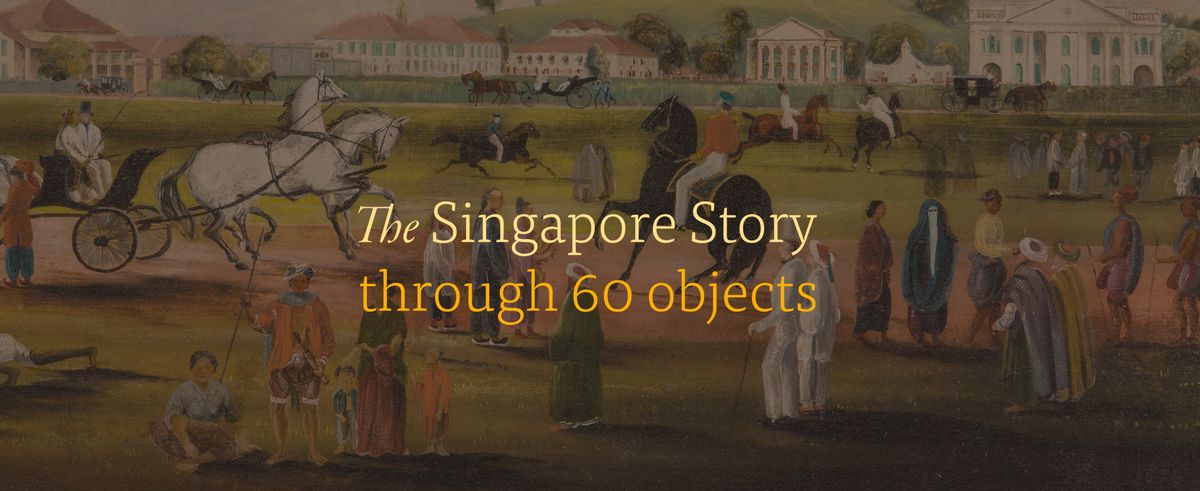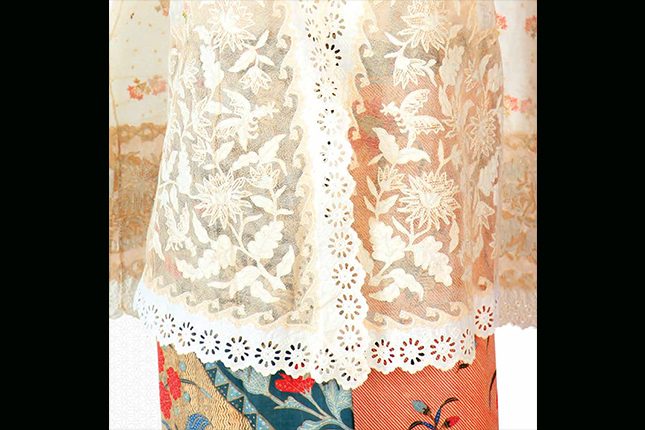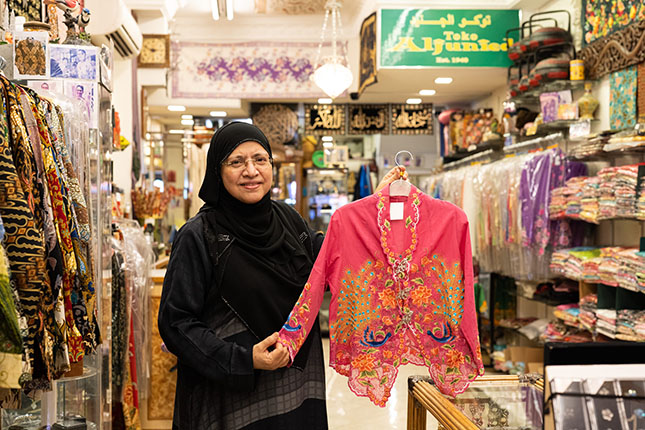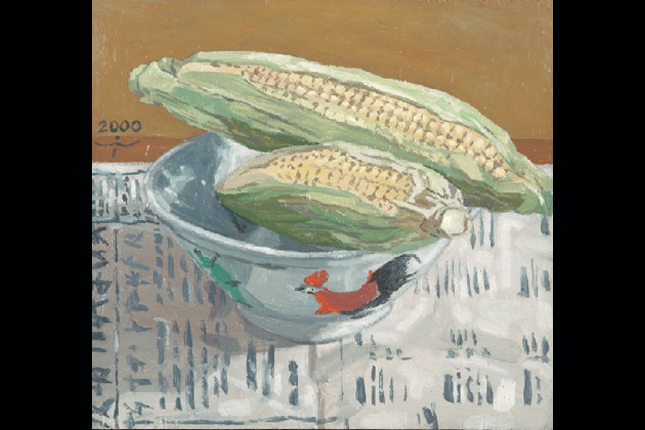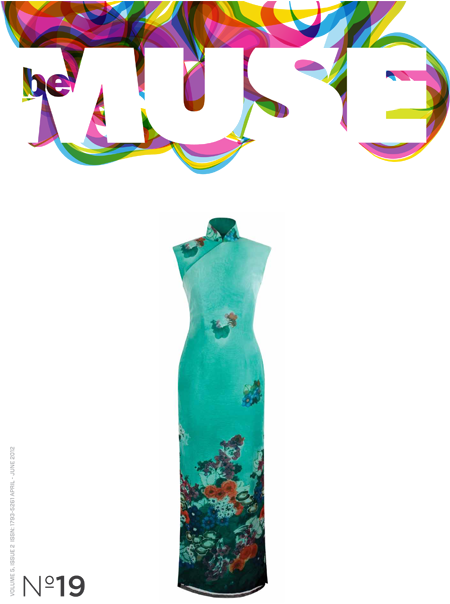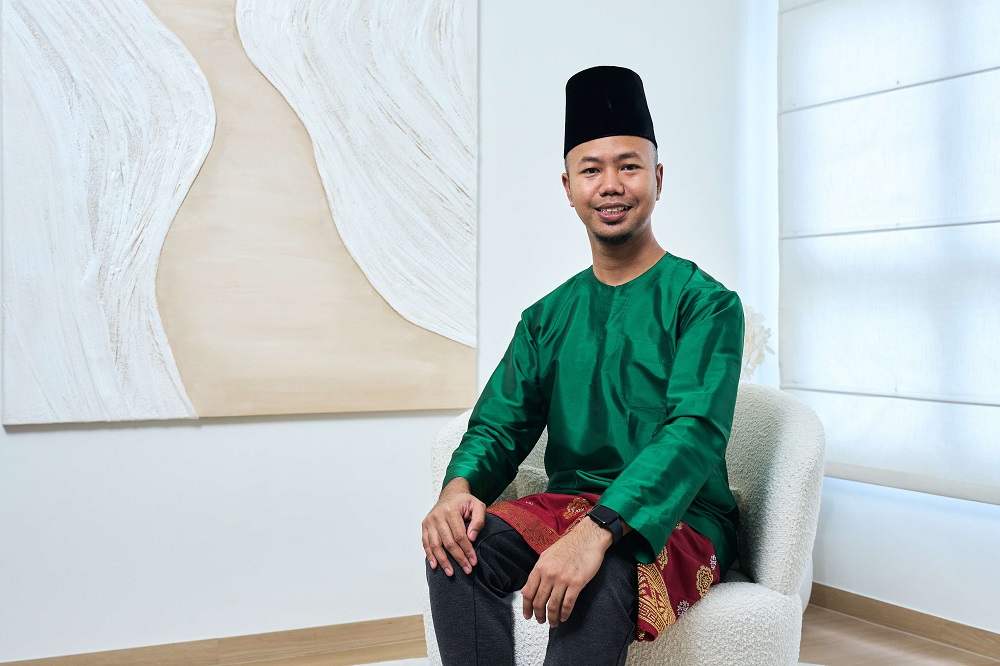x W: 11.5,
x D: 7.8cm
This finely carved luohan is dressed in long robes with heavy folds, and seated on a rockwork base. The details, which include the figure’s facial features, hair and motifs on the robe are all delicately incised. The back of the figure is inscribed with a two-character signature, ‘Yu Xuan’. This signature is generally attributed to the famous Fujian soapstone carver, Yang Ji, who is believed to have been active during the early Kangxi period (1662-1722). The exquisite details seen on the figure, the rendering of the robes are all characteristics of Yang’s work. This luohan figure is a wonderful example of soapstone carving, which is an important type of carving in Chinese art. Carved soapstone objects are especially significant in Fujian province, where much of the stone was found and used to create objects of art. Such soapstone figures were likely to have been treasured by the Chinese literati who collected and displayed these carvings in their studio. The luohan or arhat was a popular decorative subject during the Qing dynasty (1644-1911). The luohan is a disciple of the Buddha who has attained spiritual enlightenment. In Buddhist teachings, luohans are living saints who uphold Buddha’s teachings and are a source of spiritual inspiration for the laity.




